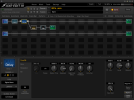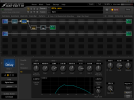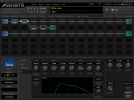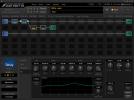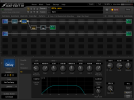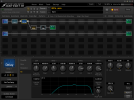Jonathan Thomas
Inspired
Can someone explain the way the master feedback works on the delay block, please?
From the wiki:
From the blocks guide:
Reason I'm asking is because with each algorithm, self-oscillation happens at different points of the balance between the feedback and master feedback controls.
I'm wondering, with the analogue style delays, DMM included, if anyone has found a sweet spot for edge of oscillation. That creates an almost infinite delay spread behind their playing, but never self-oscillates to the point of raising in volume and getting out of control, as is so easily done when trying to do this stuff.
I've got there, in a way, but I'm not quite content and would like to understand the relationship between the two controls more and how I can utilise them both to my advantage to create this stuff. Many thanks.
From the wiki:
This goes up to 200% to create oscillating delay effects.
From the blocks guide:
Scales any and all feedback parameters. Note that the range of this control is 0–200%, making it possible (easy, in fact) to overload the feedback loop.
Reason I'm asking is because with each algorithm, self-oscillation happens at different points of the balance between the feedback and master feedback controls.
I'm wondering, with the analogue style delays, DMM included, if anyone has found a sweet spot for edge of oscillation. That creates an almost infinite delay spread behind their playing, but never self-oscillates to the point of raising in volume and getting out of control, as is so easily done when trying to do this stuff.
I've got there, in a way, but I'm not quite content and would like to understand the relationship between the two controls more and how I can utilise them both to my advantage to create this stuff. Many thanks.

